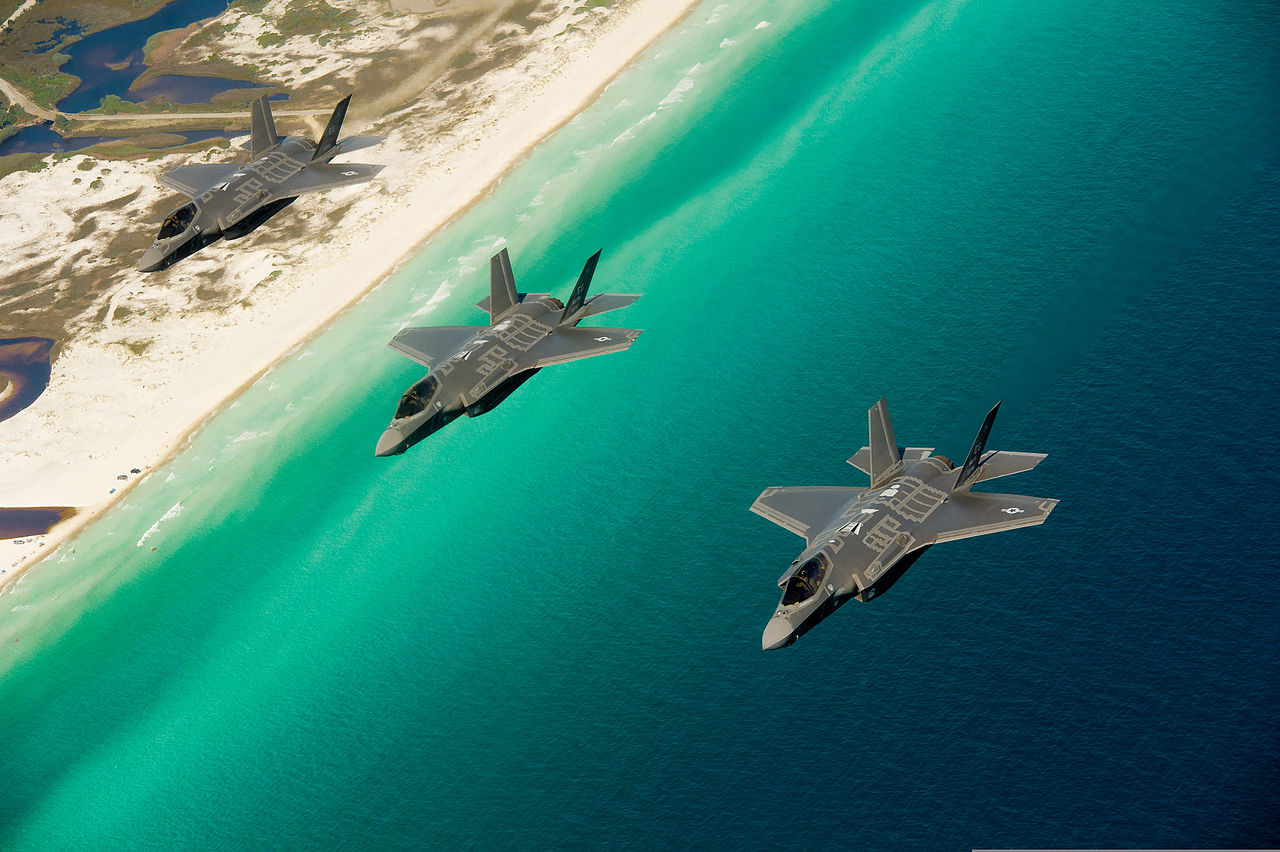

When the Air Force and Navy first started looking for a shared plane to replace several of their aging fighters, there was a Clinton in the White House. The Air Force and Navy wanted a fighter to face the threats of tomorrow, stealthy and deadly for the unknown dangers of the century to come. The end result of that program, almost 20 years later, is Lockheed Martin’s F-35. And when it finally flies its first combat mission, there’s a good chance there could be a different Clinton in the Oval Office.
Last fall, the United States Marine Corps declared their F-35B variant operational. The Navy, which will fly the F-35C version, has yet to do the same for their version, though that’s expected in the coming years. The development of the F-35 is a saga, spanning five presidential terms and quietly sitting on the backburner during America’s two long and concurrent wars.
The F-35 Lightning II isn’t just an expensive plane, it’s three expensive planes, with somewhat similar bodies and some shared parts. The F-35A, used by the Air Force, is the cheapest, at just $108 million apiece. (Some of the cost savings in the F-35A come from volume: the USAF plans to order over 1,700 of the plane, compared to the relatively smaller batches of 340 for each of the other variants).
Next is the F-35C, the Navy variant, which costs $129 million, and has long wings plus rugged landing gear for the rigors of operating from the deck of an aircraft carrier. The F-35C can also carry more fuel inside, and thanks to an external pod, its gun carries more ammunition than the Air Force version. Finally, the Marine Corps’ F-35B is the most expensive, which for $134 million adds the ability to take off and land vertically, meaning it can fly from shorter runways than those on aircraft carriers. Several other nations joined the United States in developing the F-35, and unlike America’s previous stealth fighters, the F-35 will be flown by allies as well as the Department of Defense.
In a statement put out by the Air Force, Air Force Chief of Staff Gen. David L. Goldfein said:
There was, as recently as 2013 thought that the F-35 might be canceled. In 2009, Congress voted to stop production of America’s other modern stealth fighter, the air-superiority F-22. Yet the F-35 has endured, through inertia as much as anything else. While it may be synonymous with the high price military industrial excess, there simply was no other program to rival it. When the Air Force and the Navy committed to replacing their current fighters with a shared fighter design, the impetus behind the F-35 became too great to steer aside, and now the Pentagon is one step closer to fielding a stealthy, contradictory workhorse fighter for the next 30 years, or even longer.
When the F-35 first sees combat, expect it to be a lot like how the F-22 first went to war. A highly advanced, multi-million dollar stealth airplane, built to beat the best the world has to offer, deployed to bomb buildings held by a nonstate actor like ISIS in Syria. American planes keep rising in cost, while the targets for those planes mostly stick to putting machine guns on pickup trucks and turning cars into bombs.
I leave you with this, a picture of Boeing’s X-32 entry for the competition. No doubt the X-32 would have suffered many of the same struggles during its development, but at the end of the day, we could have had this incredibly goofy looking plane. It’s not the greatest “what-if” in the history of stealth fighters. It’s definitely the silliest.

